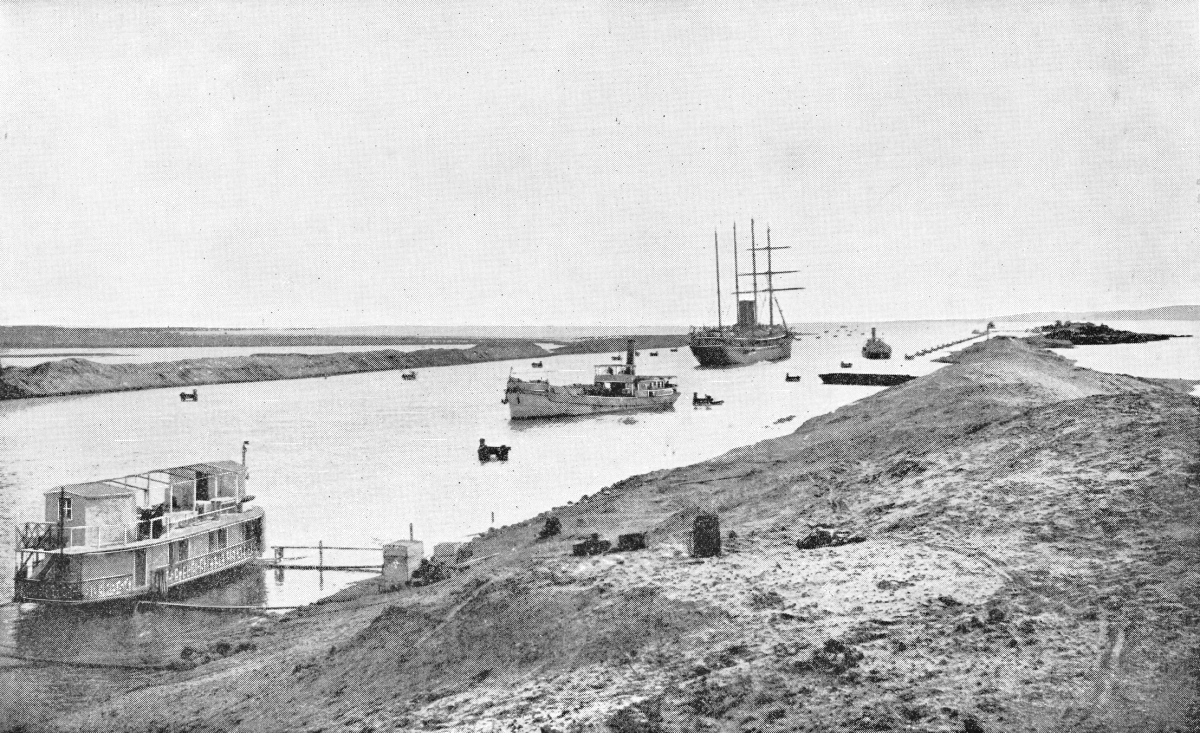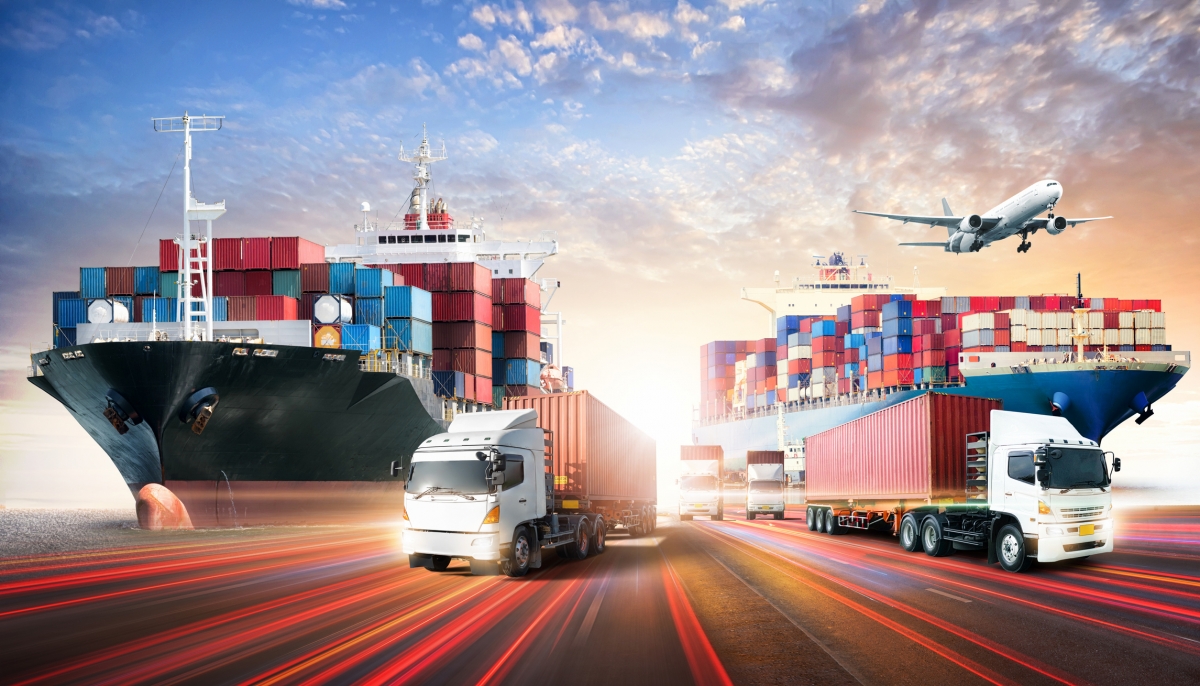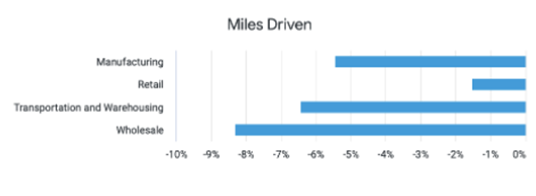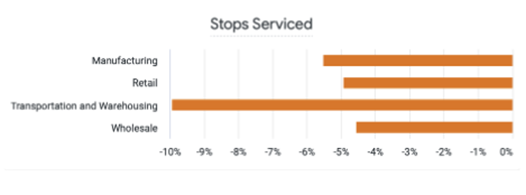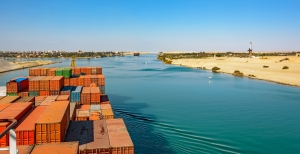
This article was updated on May 5, 2021, to reflect our data-based findings.
The ship has finally sailed!
On March 23, the Ever Given, a Panamanian ship, was en route to the Netherlands from China when it found its massive size lodged in the Suez Canal, blocking hundreds of vessels and considerably disrupting global ocean freight transport and international commerce for nearly a week. On March 29, salvage crews managed to free the 1,300 foot-long vessel and resume business as usual. But is business truly back to normal?
![]()
The Suez Canal is a human-made waterway for global ocean freight, spanning across the Mediterranean Sea (in the Egyptian city of Suez) to the Red Sea. The canal allows for the shortest maritime routes between Europe and Asia. Since its creation in 1869, the Suez Canal has been vital for international trade and a leading character on the global conflict stage. A ship that passes through the canal reduces their journey time circumnavigating around Africa from 20 days to a mere 13 hours.
Although the Suez Canal is over 6,500 miles from the U.S., a disruption in this speck-on-the-map area resulted in waves felt in even the most rural American towns. It serves as a metaphor for the interconnectedness of global trade and transportation. And, although the vessel is now on its merry way, all is certainly not back to normal. Let’s break down what the Suez Canal crisis can teach us about our industry and what you need to know to keep your operation afloat — no pun intended.
A closer look at the connection between ocean freight and trucking
Approximately $400 million in cargo flows through the Suez Canal every hour. As such, a week-long blockage results in billions upon billions of dollars’ worth of jeopardized costs. Additionally, with the global supply chain already stretched thin amid the COVID-19 pandemic, this halt in international transport will likely result in substantial ramifications for trucking.
In the U.S., trucking is one of the top 10 industries impacted by this incident. Other impacted industries include grocery, hardware, medical, and sporting goods. As transportation professionals recognize, trucking is connected to all affected industries since we rely on trucking and vehicle transport to deliver goods.
Supplies transported through ocean freight are packaged in metal boxes stacked on ships and transported, as the Wall Street Journal cleverly refers to it, as a “carefully choreographed global shuffle.” If the boxes don’t arrive at a specific port, that port can’t load the land-based shipments scheduled for the vacant boxes. Additionally, to try and salvage time and re-shuffle transport, many ships will likely have to pivot to new ports. If commercial vehicles are slated to take loads from specific ports, they may now have to re-adjust to see if their load is still scheduled to arrive at their planned port.
How this will affect the global supply chain — and for how long
![]()
As emphasized by the American Journal of Transportation, this crisis will impact the worldwide supply chain for weeks and possibly even months to come.
Exporters and importers must now secure spots at seaports, as rising delays due to the crisis are already rampant. Additionally, shipping activity is increasing and expected to peak for the next 30 days while everyone from retail giants to mom-and-pop stores replenishes their inventory.
Unfortunately, the friendly skies aren’t faring so well either. U.S. air transport is congested for the near foreseeable future, resulting in businesses experiencing delays in their airport load pickups by four days or more in some instances. Speculatively, congested air and ocean transport may further increase truck loads and miles, as supply chain professionals seek to balance and distribute shipments via whichever medium is most accessible and timely.
What Omnitracs data signifies
Our data pinpoints the wide-reaching impact of global weather events on the U.S. transportation industry. These events can not only negatively impact your ability to deliver goods to your customers in conjunction with your pre-estimated time windows, but they reflect the interconnectedness of our global market.
![]()
Above, we look at the change in miles and the number of stops made after the Suez Canal was opened, comparing these metrics to the week before it was shut down. Across four major industries, we concluded the number of miles driven dropped between 5 to 8%.
![]()
Additionally, while examining stops serviced along the same date range, our data team confirmed the number of stops dropped upwards of 10%.
Both these charts emphasize the imperativeness of planning ahead with a fleet-focused disaster plan at your disposal. This is all the more streamlined with efficient applications by your side.
Prevent a sinking operation
The Suez Canal crisis may seem jarring to many across the transportation industry — especially as some freight leaders still find themselves in the throes of it all. However, from a long-term perspective, it serves as a metaphor for the global supply chain and individual business strategies.
In our industry, both over-the-road and last-mile professionals can protect their businesses as best as possible. Digestible industry and personalized fleet data give you the visibility you need to make better business decisions for your customers and teams. With strategic trip planning, you can map out routes weeks in advance and then utilize day-to-day routing and dispatch to adjust those routes in near real-time and on an as-needed basis. Lastly, with proactive alerts, you can get ahead of customer communication by showing your customers you value their loads and time and will work diligently to shorten unforeseen delays.
The canal issue also teaches us that some situations are beyond our control, and that’s where reflection should begin. What technology do you have in place when something happens that you, your dedicated teams, and your customers didn’t anticipate? As our supply chain becomes all the more globally connected, these questions and answers can help you navigate even the most treacherous waters.
For more on the correlation between diverse freight transport, read our blog article on emergency freight movement.

